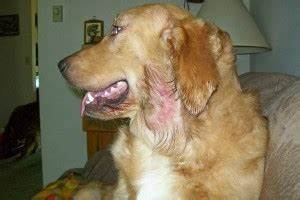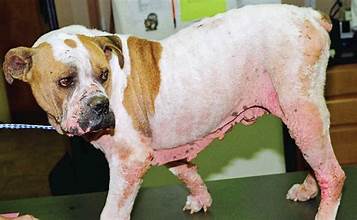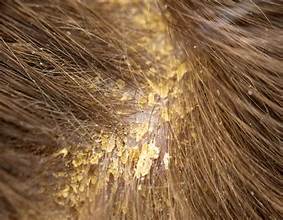As pet owners, we must be vigilant about changes in our dogs’ skin, as these can indicate various underlying issues. Dogs can experience a variety of skin conditions, ranging from mild irritations to serious medical issues. Understanding the common skin problems that affect dogs, their causes, symptoms, treatments, and prevention tips can help ensure your pet stays happy and healthy.
Common Skin Conditions in Dogs
- Hot Spots (Acute Moist Dermatitis)
- Cause:
Allergies, insect bites, or skin infections often cause hot spots. They occur when a dog scratches or bites an area of skin, creating an open wound that becomes infected.

- Symptoms:
Red, moist, inflamed, and painful patches of skin, often with hair loss.
- Treatment:
The first step is to clean the area and prevent further irritation. Topical treatments such as hydrocortisone sprays may help reduce inflammation. In some cases, antibiotics or antifungal medications may be required.
- Fleas and Ticks
- Cause:
Fleas and ticks are external parasites that cause itching, hair loss, and sometimes infection.
- Symptoms:
Itching, visible fleas or ticks, and sometimes red, inflamed skin.
- Treatment:
Flea and tick prevention through topical treatments, oral medications, or flea collars is essential. Topical therapies may also relieve irritation in infected areas. Regular grooming and checking for ticks are also crucial.
- Allergies (Environmental, Food, or Flea)
- Cause:
Dogs can develop allergies to certain foods and environmental allergens, such as pollen, dust mites, mold, and flea bites.
- Symptoms:
Itchy skin, red patches, rashes, and ear infections are common symptoms of food allergies, often resulting in gastrointestinal issues and skin problems.
- Treatment:
Identify the allergen and eliminate it from your dog’s environment or diet if possible. Medications such as antihistamines, corticosteroids, or allergy shots may help alleviate symptoms. Regular baths with hypoallergenic shampoos can soothe irritated skin.
- Dermatitis
- Cause:
Dermatitis is a skin inflammation that allergies, infections, or irritants can cause.

- Symptoms:
Redness, itching, hair loss, and scabs.
- Treatment:
Depending on the cause, treatments may include topical steroids, antibiotics, antifungal medications, or medicated shampoos. In chronic cases, dietary changes or allergy treatments may be necessary.
- Ringworm (Fungal Infection)
- Cause:
Ringworm is a fungal infection that can be transmitted from other animals or humans.
- Symptoms:
Circular patches of hair loss with scaly skin often appear on the head, paws, or ears.
- Treatment:
Antifungal medications, either topical or oral, are used to treat ringworm. Disinfecting the dog’s environment is also essential to prevent reinfection.
- Yeast Infections
- Cause:
Yeast infections are often triggered by allergies or an imbalance in the dog’s natural skin flora.

- Symptoms:
Itching, greasy skin, hair loss, and a foul odor, usually in the ears, paws, or skin folds.
- Treatment:
Antifungal shampoos, ear cleaners, and oral medications may be required. Identifying and managing underlying causes, such as allergies, is crucial to preventing recurrence.
- Mange (Sarcoptic or Demodectic)
- Cause:
Mange is caused by mites that infest the skin. Sarcoptic mange is highly contagious, while demodectic mange is not.
- Symptoms:
Intense itching, hair loss, red, scaly skin, and sores.
- Treatment:
Medications to kill the mites, such as ivermectin or milbemycin, are used for treatment. Sarcoptic mange may require dog isolation to prevent spreading.
- Seborrhea
- Cause:
Seborrhea is a skin condition caused by an overproduction of oils. It is often associated with other underlying conditions, such as allergies or hormonal imbalances.
- Symptoms:
Greasy or flaky skin, dandruff, and a strong odor.
- Treatment:
Regular bathing with medicated shampoos helps control oil production. Sometimes, dietary changes, antibiotics, or antifungal medications are needed.
- Skin Cancer
- Cause:
Like humans, dogs can develop skin cancer, often in the form of benign or malignant tumors.
- Symptoms:
Lumps, bumps, or sores on the skin that don’t heal, changes in the color or shape of existing growths.
- Treatment:
Depending on the severity and type of cancer, treatment options include surgical removal, radiation, or chemotherapy. Early detection is key to successful treatment.
How to Diagnose Skin Conditions in Dogs
Diagnosis typically involves a combination of physical exams, medical history, and sometimes additional tests. Your vet may recommend:
- Skin scrapings to check for parasites like mites or fungal infections.
- Allergy testing to identify food or environmental allergies.
- Blood tests to rule out systemic conditions.
- Culture swabs to detect bacterial or fungal infections.
When to See a Veterinarian
If your dog is experiencing any of the following, it’s time to consult a veterinarian:
- Persistent or worsening symptoms.
- Excessive scratching, biting, or licking.
- Skin sores that don’t heal or become infected.
- Hair loss or changes in coat condition.
- Visible parasites like fleas or ticks.
- Any signs of pain or discomfort when touching the skin.
Preventing Skin Conditions in Dogs
- Regular Grooming:
Bathing your dog with a suitable shampoo and brushing it regularly helps keep its skin healthy and free of parasites.
- Parasite Prevention:
Use flea and tick preventatives year-round to avoid infestations.
- Allergy Management:
Identify potential allergens and take steps to minimize exposure.
- Nutrition:
The Role of Nutrition in Skin Health: A balanced diet rich in omega-3 fatty acids can help support your dog’s skin health, reducing the risk of skin conditions. Consult your veterinarian for advice on the best diet for your dog.
- Regular Vet Checkups:
Regular vet checkups are a proactive way to catch potential skin conditions early before they become serious. By staying on top of your dog’s health, you can help ensure its well-being.
Conclusion
Early detection is crucial in managing skin conditions in dogs. By being vigilant and seeking prompt veterinary care when necessary, you can ensure your dog enjoys a comfortable and happy life without the discomfort of skin problems.
By being proactive and seeking veterinary care when necessary, you can ensure your dog enjoys a comfortable and happy life without the discomfort of skin problems.




